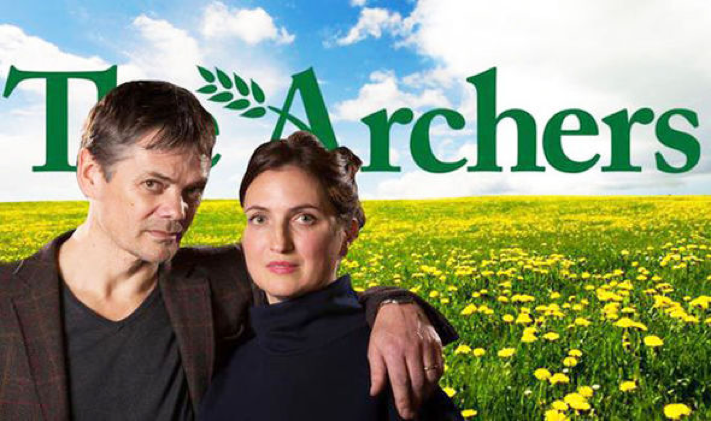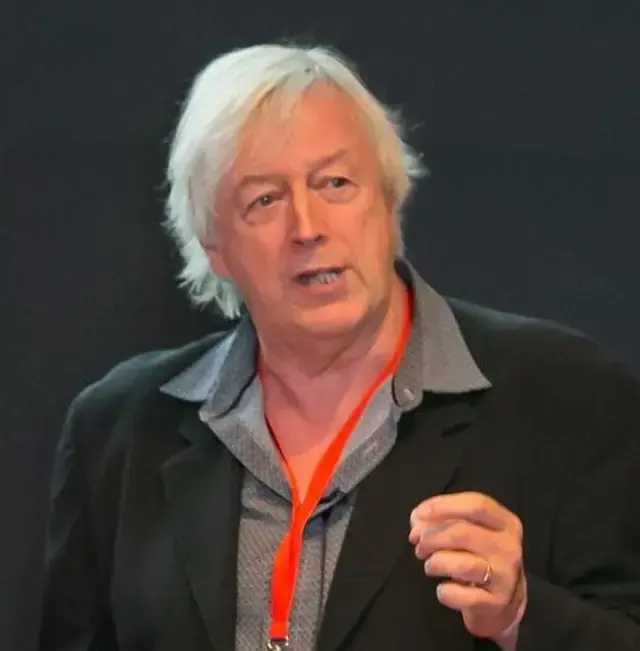CDE project 6. Section 4.9: to the edge of acceptability
How powerful emotional storytelling on a BBC radio drama captivated a nation and raised awareness of domestic violence.
- Written by
- Ken Burnett
- Added
- June 28, 2018
The use and misuse of emotion. Section 4: emotions and donors.
by Ken Burnett
To the edge of acceptability
A visit to Ambridge, home of the BBC radio soap opera The Archers and the beleaguered Tichener family. At their time of crisis Helen and Rob’s stormy story provides emotional moments that reward a painful journey, along with some useful lessons for the would-be fundraising drama writer.

The power and the potential of emotional storytelling have been keeping British audiences on the edge of their seats in BBC Radio 4’s enduring radio soap opera, The Archers, through the long summer’s build up to the courtroom climax that ended the abusive marriage of Rob and Helen Tichener.
Starting happily as a dream romance that nobody might have paid much attention to, gradually it became clear that something in their relationship was not right as Helen and her son Henry drifted inexorably into the controlling clutches of her plausible, devious, dictatorial new husband, Rob.
Throughout its convoluted twists and turns the story pulled no punches. Tight story lines, authenticity, human detail and drama piled on more drama all combined to deliver a draining roller-coaster of emotional storytelling that skilfully and sensitively pushed its massive five million plus audience to the edge of acceptability.
Helen had stabbed Rob, though not fatally. But was it self-defence or attempted murder? After the steamy summer build-up to the trial the Twittersphere went ballistic when finally the court’s verdict was announced. Amid streams of heated comments Rosie wrote ‘@BBCTheArchers Never cried at the radio before. In bits #FreeHelen’. And Jenni tweeted ‘#thearchers yippppppeeeeeeeeee!’ While Lynne ominously observed, it’s not over, Rob’s still out there…’
Telling this kind of emotional story clearly has huge parallels with the usually much shorter and quicker emotional storytelling required of the inspirational relationship fundraiser. In a blog on the BBC website Friday 9th September 2016, writer Tim Stimpson commented on how Helen's trial was written.

‘It seems a long time since I sat down to write two and a half hours of The Archers, comprising of six ‘normal’ episodes, Helen’s trial and Sunday’s Jury Special. In fact it was only four months ago.
‘Not everyone may appreciate how quickly The Archers is made, but for a week’s worth of episodes we have two days to prepare a pitch, four days to write a synopsis, a couple of weeks for the scripts and then rewrites are normally done over a weekend. Even when the episodes are out of the ordinary we have no extra time, so I felt as though I was embarking on a marathon that had to be run at the speed of a sprint.
A realistic and accurate framework
‘Fortunately I had a fantastic team around me. Journalist Sarah Swadling was brought in to research the trial and worked closely with criminal barrister Simon Phillips to produce a realistic and accurate framework. Outgoing Editor Sean O’Connor and I then worked to shape it into six, dramatic twelve and half minute episodes. This was easier said than done. The British justice system is not given to revelations and cliff hangers.
‘For instance, for Jess (Rob’s first wife, a surprise late witness who’d previously refused to testify) to be allowed to give evidence she would have to come forward before Helen finished giving hers. But how to do it without spoiling the surprise? Add to that the difficulty of squeezing a four-day trial into seventy-five minutes, as well as the restrictions on the number of characters we’re able to cast, and simply structuring the episodes became a huge challenge even before I started thinking about dialogue.
Creating new characters
‘Not quite as big a challenge as the Jury Special though (an hour-long programme focusing almost entirely on the 12-person jury’s decision-making process in Helen’s trail, which showed the inconsistencies, foibles and prejudices upon which justice can hang). ‘Writing for characters you already know is one thing, but having to create eight new characters from scratch is quite another. What I knew I didn’t want was a group of functionally written jurors sat around doing nothing but going over the evidence. One would hope that most listeners are on Helen’s side so it wasn’t as if anyone’s opinion was going to be swayed. Where was the dramatic potential that could make the Special genuinely special?

‘At the time the country was still reeling from the Brexit vote (On 23rd June 2016 the British people voted in a referendum to leave the European Union) and it seemed to me that the jury room could be a forum in which some of those issues could be raised. I’d also just read about a study that found that attitudes to capital punishment are a much better indicator as to how a person voted in the referendum than socio-economic factors. How much would the jurors’ individual worldviews affect how they saw Helen’s case?
‘By this time Sean had moved to EastEnders so I drove down to see him in Walford (Elstree Studios) and pitched the idea. Fortunately he liked it and a month later we were recording the jury scenes in the radio drama studio at Broadcasting House.
‘It’s only now that everything has been aired that I can take stock of the last few months. I’m sure we’ve given the listeners the verdict they wanted, but I also hope we’ve provided the emotional moments along the way that reward their commitment to such a painful story.
‘Of course the moment everyone still craves is Rob getting his comeuppance, but in the eyes of the law he’s still an innocent man. Is that how the residents of Ambridge will see him though?’
Tim Stimpson, writer
In an online appeal in the immediate aftermath of this story the women’s charity Refuge raised more than £150,000 in donations from c. 7,500 new donors. Paul Trueman, who set up the Just Giving page said he started the campaign because, ‘for every fictional Helen there are real ones.’ He added, ‘I’ve been bowled over by the thousands of comments left on the page and would urge everyone to take a look. They speak not only to the scale of the lives affected but to the healing power of charities like Refuge to help families put their lives back together.’ Refuge CEO Sandra Horley said, ‘Never before have I seen such amazing public support for our work.’
Charity fundraisers may not often recognise the similarities between their role and that of the radio or TV scriptwriter. But they are there all the same.
Meanwhile it strikes me and every other listener that we’ve not heard the last of that Rob Tichener bloke, have we? And the nation is worrying…
See also
The Helen Tichner (nee Archer) Rescue Fund case history on SOFII.

















